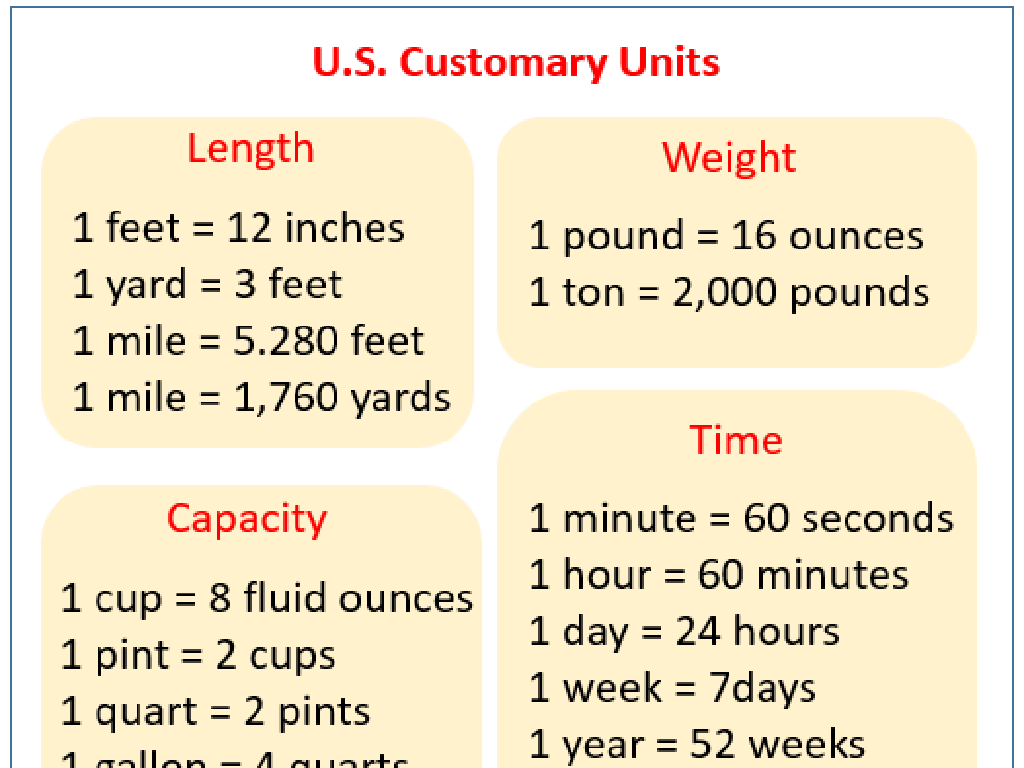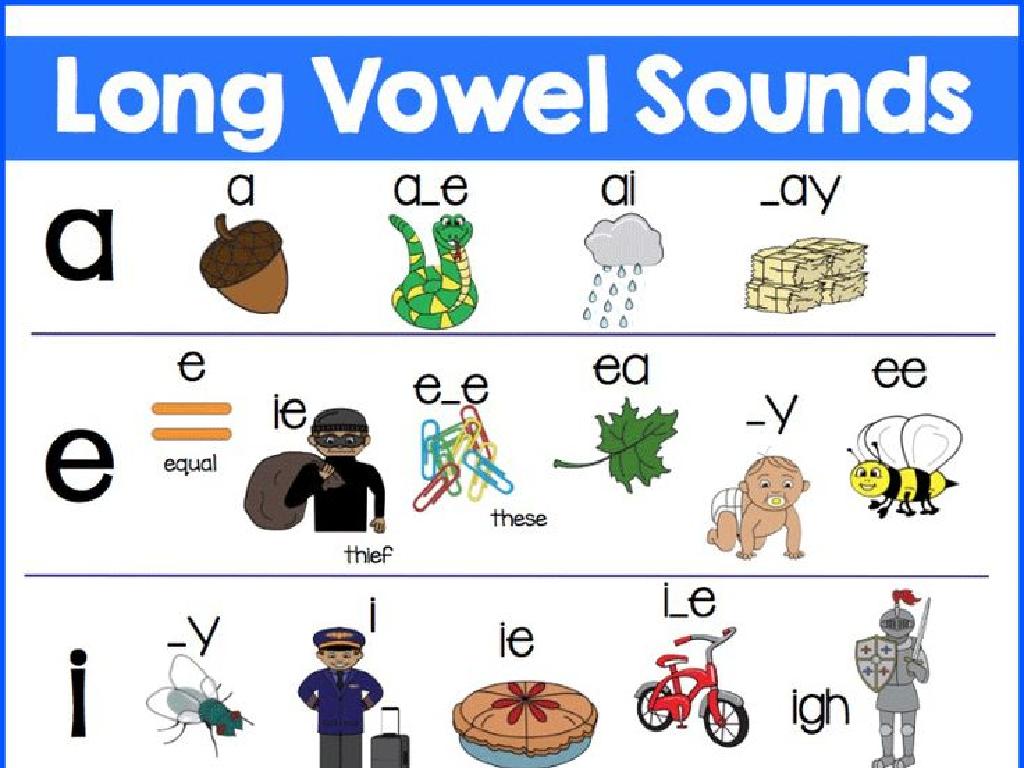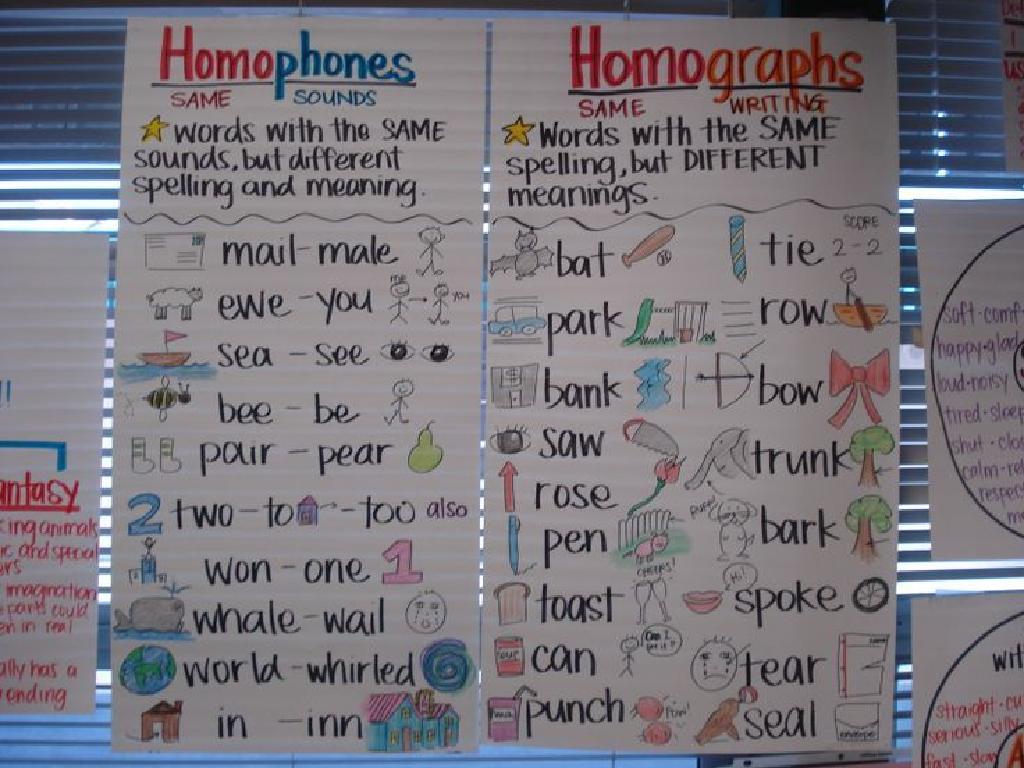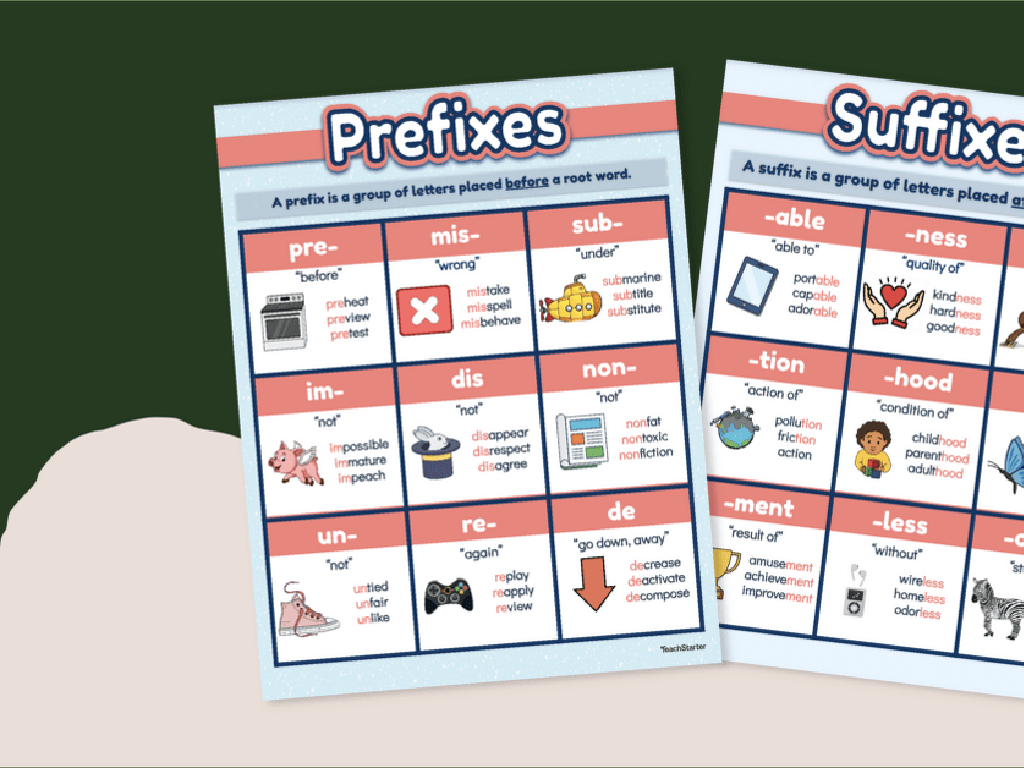Multiplication Facts For 2, 3, 4, 5, And 10: Sorting
Subject: Math
Grade: Third grade
Topic: Multiplication Fluency Up To 10
Please LOG IN to download the presentation. Access is available to registered users only.
View More Content
Welcome to Multiplication!
– Today’s Adventure: Multiplication Facts!
– Multiplication means groups of numbers
– If we have 3 groups of 4 apples, that’s 3×4!
– Learn to multiply by 2, 3, 4, 5, and 10
– We’ll focus on these numbers to build our skills
– Practice sorting multiplication facts
– Sort facts like 2×3 and 4×5 into groups
|
This slide introduces students to the concept of multiplication as a method for quick and efficient counting. Explain multiplication as combining equal groups and use everyday examples, such as counting apples in groups, to illustrate this point. Emphasize the numbers 2, 3, 4, 5, and 10, as these are foundational for building multiplication fluency. Engage the class with sorting activities where they group multiplication facts by their product or by the numbers being multiplied. This will help reinforce their understanding and recognition of patterns within multiplication tables.
Understanding Multiplication
– Multiplication: fast addition
– Example: 3 x 4 equals 3 + 3 + 3 + 3
– Instead of adding 3 four times, we multiply
– Groups of the same size
– Imagine 4 baskets with 3 apples each
– It’s a shortcut for adding!
– Multiplication saves time with equal groups
|
This slide introduces the concept of multiplication as a method for quick addition. It’s crucial to help students see multiplication as repeated addition, which can be a more efficient way to add groups of the same number. Use the example of 3 x 4 to show how it’s the same as adding 3 four times. Relate this to real-life scenarios, such as having 4 baskets with 3 apples in each, to illustrate groups of the same size. Emphasize that multiplication is a shortcut when dealing with equal groups and encourage students to think of other examples where multiplication could save time over addition.
Multiplying by 2: Doubling Numbers
– Understanding ‘multiply by 2’
– To multiply by 2 means to double a number.
– Example: 2 x 3 equals 6
– 2 x 3 is like having 2 groups of 3 apples. How many apples do you have in total?
– Visualize with groups
– Imagine 2 baskets, each with 3 apples. Count all the apples to find the answer.
– Practice multiplication by 2
– We’ll solve problems together to become fast at multiplying by 2!
|
This slide introduces the concept of multiplication by 2 as a form of doubling. Start by explaining that multiplying by 2 means you have two of something. Use visual aids like counters or drawings to show 2 groups of a number. For example, draw two sets of 3 objects and count them together to demonstrate that 2 x 3 equals 6. Encourage students to visualize the groups to understand the concept better. Finish with a practice session where students can try multiplying different numbers by 2, reinforcing the idea that this is just doubling the number. Provide immediate feedback and praise to build their confidence.
Multiplying by 3: Grouping Fun!
– Understanding multiplying by 3
– Imagine having 3 baskets with apples
– Example: 3 groups of 4
– 3 x 4 is like having 3 sets of 4 toys
– Multiplication equals 12
– When we add all 3 groups, we get 12
– Practice multiplication on your own!
|
This slide introduces the concept of multiplication by 3, emphasizing the idea of having multiple groups of a number. Use relatable examples like baskets of apples or sets of toys to illustrate the point. The example 3 x 4 is broken down into 3 groups of 4 items each, helping students visualize the concept. After explaining, encourage students to try multiplying different sets of numbers by 3 on their own. Provide guidance on how to set up the problem and verify their answers. This activity will help reinforce their understanding and build confidence in their multiplication skills.
Multiplying by 4
– Understanding multiplication by 4
– Visualizing 4 groups of a number
– Imagine 4 baskets with 2 apples each
– Example: 4 x 2 equals 8
– 4 times 2 is like adding 2 four times: 2+2+2+2
– Practice multiplying numbers by 4
– Let’s solve 4 x 3, 4 x 5, and 4 x 10 together
|
This slide is focused on teaching students to multiply by 4. Start by explaining that multiplying by 4 means we have 4 times a number. Use visual aids like grouping objects to help students understand the concept. For example, show them 4 groups of 2 items to illustrate 4 x 2. Encourage students to visualize the groups and use addition to find the total. After explaining with an example, engage the class in a collaborative activity where they practice multiplying different numbers by 4. Provide guidance and ensure each student participates and understands the process. This activity will help solidify their understanding of multiplication by 4 and prepare them for more complex multiplication facts.
Multiplying by 5: Fun with Fives!
– Multiplying by 5 is simple
– Example: 5 x 2 = 10
– Think: 5 groups of 2 apples gives us 10 apples
– Create your own 5’s examples
– Try with different numbers: 5 x 3, 5 x 4…
– Practice makes perfect
– The more you practice, the quicker you’ll learn!
|
This slide introduces the concept of multiplying by 5, emphasizing that it’s both fun and straightforward. Start by explaining that multiplying by 5 is like adding a number to itself five times. Use visual aids like groups of objects to illustrate the concept. For example, show 5 groups of 2 items to represent 5 x 2. Encourage students to come up with their own examples, such as 5 times the number of days in a week or fingers on one hand. Provide ample practice opportunities with different numbers to solidify their understanding and build fluency in multiplication by 5.
Multiplying by 10
– Understanding multiplying by 10
– It’s like adding a zero to the number
– Example: 10 x 3 equals 30
– Think of it as 10 groups of 3 items
– Visualize 10 groups of 3
– Picture 10 sets of 3 objects to help
– Let’s practice with more examples!
– Try 10 x 4, 10 x 5, and 10 x 6 next
|
This slide introduces the concept of multiplying by 10, which is a fundamental skill in understanding place value and multiplication. Emphasize that when we multiply any number by 10, we essentially add a zero to the end of that number, making it ten times larger. Use visual aids like counters or drawings to show 10 groups of 3 to solidify the concept. During practice, encourage students to visualize the groups and to use this method to multiply other numbers by 10. Provide several examples and have students work through them, ensuring they grasp the concept of ‘adding a zero’ to the original number.
Sorting Multiplication Facts
– Why sorting helps in multiplication
– Sorting organizes facts for easier recall
– Sorting by multiplier number
– Group facts by the number you multiply, like all facts for ‘2’
– Interactive board sorting activity
– We’ll sort facts as a class on the board
– Practice makes perfect
|
This slide introduces the concept of sorting as a tool to organize multiplication facts, making them easier to remember and recall. Explain that sorting can be done by the number being multiplied, such as grouping all the facts for ‘2’ together. Engage the class in an interactive activity where students come up to the board to sort different multiplication facts into groups. This hands-on approach helps reinforce their understanding and gives them a visual way to remember their multiplication facts. Encourage students to practice sorting at home with flashcards or worksheets to build fluency. Provide examples and guide the class through the activity, ensuring each student has a chance to participate.
Class Activity: Multiplication Fact Sort
– Work together in small groups
– Receive cards with multiplication facts
– Sort cards by the multiplier number
– For example, place all cards with ‘x2’ in one pile
– Discuss the sorting with your group
– Share your sorting strategy and findings
|
This interactive class activity is designed to help students practice and reinforce their understanding of multiplication facts for 2, 3, 4, 5, and 10. By working in groups, students will engage in collaborative learning, enhancing their social and communication skills. Provide each group with a set of cards, each displaying a different multiplication fact. Instruct them to sort the cards into piles based on the multiplier number. This will help them recognize patterns and strengthen their fluency in multiplication. After sorting, encourage groups to discuss their strategies and what they observed. Possible variations of the activity could include timing the groups for a friendly competition, having students create their own multiplication fact cards, or challenging them to sort by the product instead of the multiplier.
Multiplication Mastery: Review & Practice
– Congratulations on sorting facts!
– Multiplication equals quick addition
– Instead of adding 2+2+2, we multiply 2×3
– Practice to perfect multiplication
– Use flashcards and games for practice
– Keep reviewing your facts daily
|
This slide is meant to congratulate the students on their hard work during the lesson and to reinforce the concept that multiplication is a faster way to add repeated numbers. Emphasize the importance of regular practice to become fluent in multiplication facts. Encourage the use of different methods such as flashcards, timed quizzes, and interactive games to make practice enjoyable. Remind them to review their multiplication facts daily to build and maintain their fluency. This will help them as they progress in math and encounter more complex problems.





